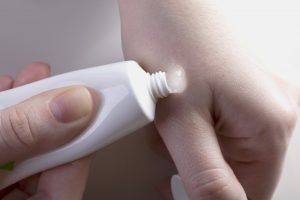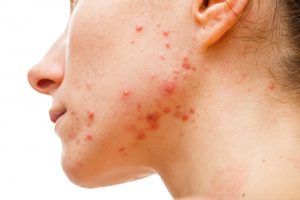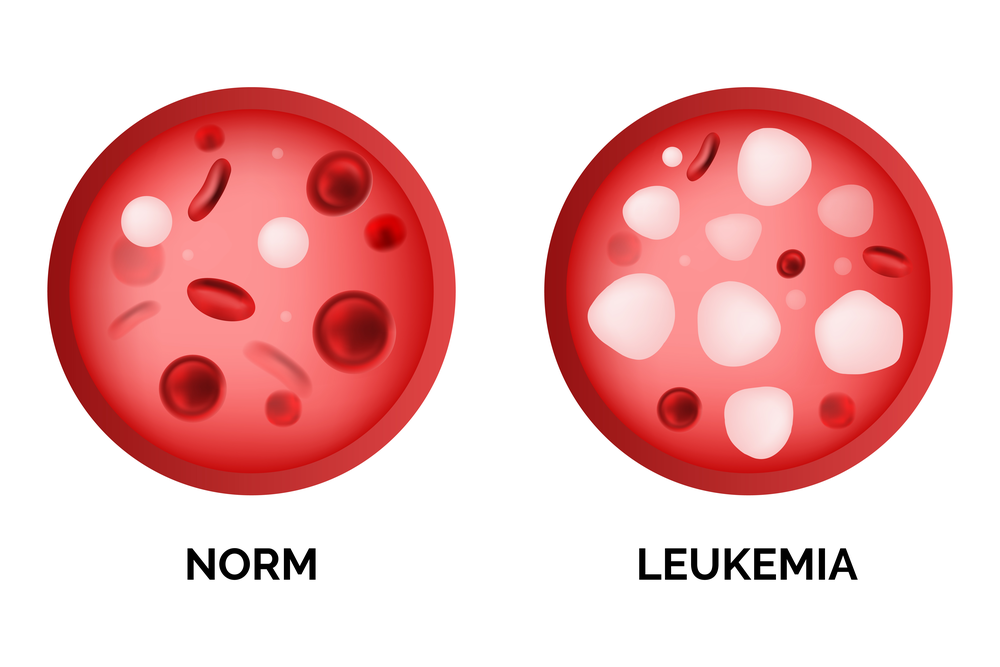Retin-A is a topically applied retinoid used to treat acne vulgaris. Its active ingredient is 0.05% tretinoin, a powerful retinoid often used in certain leukemia treatments. This may lead some to mistakenly think Retin-A can be used similarly. (Learn More)
Leukemia is a serious cancer of the body’s blood-forming tissues. Tretinoin can be used to treat what is called acute promyelocytic leukemia (APL or APML). However, Retin-A is not suitable for this purpose.
The tretinoin used to treat APL is taken orally, and it comes in a much higher (and much harsher) dose than the 0.05% dosage of Retin-A that is topically administered. (Learn More)
Tretinoin is an effective, and studied, treatment for APL. Retin-A is just too weak a treatment compared to the necessary amounts needed to combat APL. Retin-A makes no claim to treat APL. (Learn More)
The tretinoin-based drug used to treat APL comes with a laundry list of serious side effects, and it can be potentially life threatening (an often necessary risk when treating more serious conditions like APL).
Retin-A has far fewer side effects and dangers. It is an effective treatment for acne.
In short, Retin-A is not an effective treatment for any kind of leukemia. It should only be used as prescribed by a doctor. (Learn More)

Retin-A
Retin-A is a prescription treatment that’s primary active ingredient is 0.05% tretinoin.
It comes in the form of a gel, cream, and liquid, with its name derived from the word retinoid, which is the class of drug it belongs to. To be more specific, Retin-A is a topical retinoid, meaning it is applied to the skin.
Retinoids have a number of uses, including to treat aging, wrinkles, acne, psoriasis, and certain types of cancers. Retin-A specifically has only been studied for treating acne vulgaris. The long-term safety and efficacy of its use for other conditions are poorly understood.
In short, Retin-A is only approved as an acne treatment, even if retinoids (and tretinoin specifically) have been known to help with other conditions.
Can Retin-A Be Used to Treat Leukemia?
Leukemia is a cancer of the body’s blood-forming tissues. Tretinoin is not a chemotherapy drug.
Tretinoin alone is not usually an ideal, or even viable, treatment option for leukemia. It is sometimes used in conjunction with other treatment options to specifically treat acute promyelocytic leukemia (APL or APML). It can be highly effective for this purpose.
Retin-A has not been studied for this use. It is unlikely to be effective if it were studied.
Retin-A is a topical medication that is designed and used to treat acne. The tretinoin medication used to treat APL is taken orally, sold under the brand name Vesanoid. This results in two radically different impacts on the body. Importantly, Retin-A uses only a very small amount of tretinoin (which itself is a potent drug).
Only take medications as prescribed. A doctor will not prescribe Retin-A for leukemia because it has not been studied for that purpose, and other drugs have been.
If you are suffering from APL or otherwise wondering if tretinoin could help in your treatment, ask your doctor but never self-prescribe. Generally, if a drug has not been prescribed to you, there is a legitimate medical reason behind that decision.
Is Tretinoin Effective in Treating Acute Promyelocytic Leukemia?
While Retin-A specifically is not a good treatment for APL, tretinoin itself has been known for at least three decades to have a place in treating APL. One 1991 study highlights that it is safe and highly effective in inducing remission.
Much more recently, a 2017 study notes that tretinoin can indeed be an effective treatment for APL, although it can have a host of adverse effects on the skin, central nervous system, liver, and other organs.
Quick Comparison
Both topically applied and orally administered tretinoin have a place in medicine. While they both use the same drug, administration and dosing are very important to how they are used.
Orally administered tretinoin is going to affect the body more, in both positive and negative ways. As already mentioned, it can be used to treat certain forms of leukemia, but it can also have much harsher side effects than topically applied tretinoin.
The following are common side effects with orally administered tretinoin:
- Pain
- Weakness
- Severe, potentially overwhelming, tiredness
- Difficulty falling or staying asleep
- Shivering
- Feeling of fullness in the ears
- Constipation
- Diarrhea
- Stomach pain
- Heartburn
- Loss of appetite
- Weight loss
- Bone pain
- Dry skin and/or rash
- Flushing
- Hair loss
- Dizziness
- Burning, tingling, or numbness in the feet or hands
- Nervousness
- Depression
- Confusion
- Agitation
- Auditory and visual hallucinations
- Difficulty urinating
The harsh nature of orally administered tretinoin is very different than that of Retin-A. This is why oral tretinoin is generally only used to treat very serious conditions.
Retin-A is topically applied and used to treat acne. It should not be used to treat conditions like leukemia.

Retin-A’s most common side effect is skin irritation, including but not limited to the following manifestations:
- Swelling
- Reddening
- Blistering or crusting
- Burning
- Stinging
- Tingling
- Itching
- Dryness
- Warmth
- Peeling
- Skin discoloration
The Bottom Line
Both oral and topical tretinoin carry risks, but Retin-A is undeniably a less risky (and less powerful) drug than oral tretinoin, which is used for relevant types of leukemia.
Retin-A is a medication intended for acne treatment. At this time, it is not indicated for anything else. It is unlikely to ever be an effective leukemia treatment.
References
Tretinoin – Drug Summary. Prescribers’ Digital Reference.
Tretinoin (Vesanoid, ATRA). (April 4, 2019). Cancer Research UK.
Leukemia: Symptoms & Causes. (March 13, 2018). Mayo Foundation for Medical Education and Research (MFMER).
Leukemia: Side Effects. (March 13, 2018). Mayo Foundation for Medical Education and Research (MFMER).
Retin-A. (July 25, 2018). RxList.
Tretinoin. (September 15, 2016). MedlinePlus.
Retinoids, Topical. American Osteopathic College of Dermatology.
Differentiation Therapy of Acute Promyelocytic Leukemia With Tretinoin (All-trans-Retinoic Acid). (May 16, 1991). The New England Journal of Medicine.
Enhancement of Activity of la,25-Dihydroxyvitamin D3 for Growth Inhibition and Differentiation Induction of Human Myelomonocytic Leukemia Cells by Tretinoin Tocoferil, an a-Tocopherol Ester of All-Trans Retinoic Acid. (November 16, 2017). Blood Journal.


